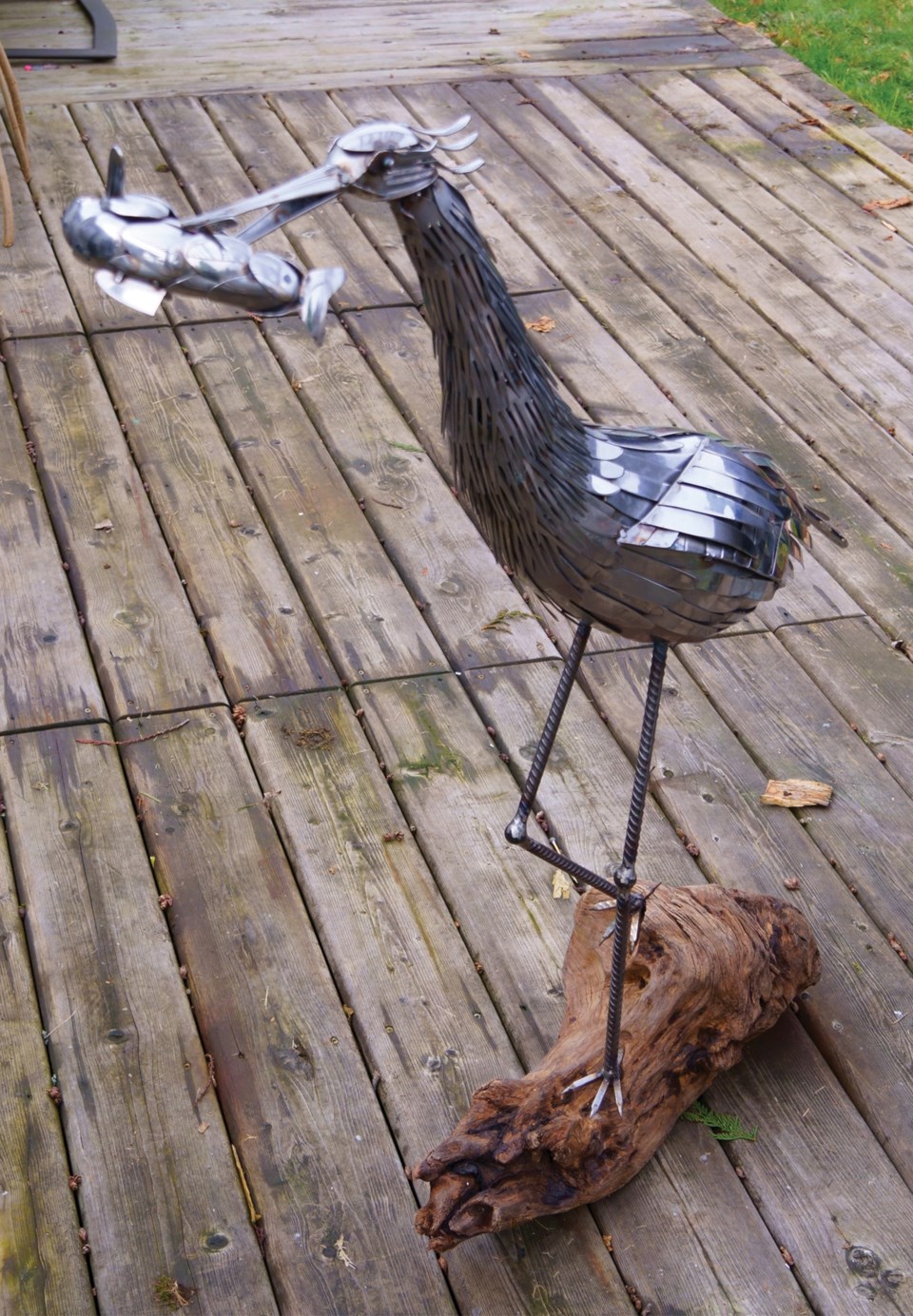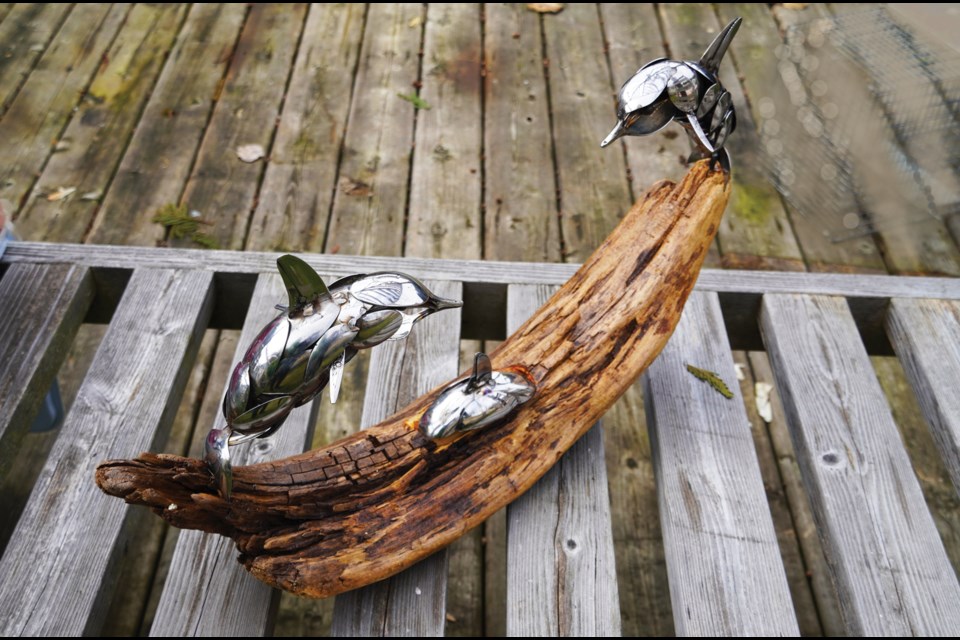Until late last year, Matthew Davis would linger every day in his West Sechelt home, tormented by the effects of Post Traumatic Stress Disorder (PTSD) following two work-related incidents, one of which could have cost him his life. He had been incapacitated for months after the second incident last July. “I sat here and didn’t do anything. It was just killing me,” he recalled in an interview.
All that changed last November. Now Davis is engaged daily, creating remarkable metal sculptures, good enough to exhibit in any local art gallery – one new goal he hopes to accomplish. What happened? Thanks to the support of his family, friends and a local psychologist, Davis, at the age of 45, has discovered he’s an artist. And he’s a new man.
The journey started ten years ago when he was on the job at Howe Sound Pulp and Paper Ltd. in Port Mellon. “I had a 20-foot length of pipe fall six storeys and hit me on the head. It broke my hand, dislocated my shoulder, tore some tendons that hold my collarbone on. I ended up with a bunch of bulged discs in my neck and a massive concussion,” Davis said.
Recovering from his injury and coping with the PTSD it caused took a long time, but he had returned to work for seven years until another workplace incident last summer. He’s reluctant to talk about just what happened, beyond saying it was “a close call.” But it was also a last straw. “It made my PTSD crippling,” he said. “I ended up in the hospital. My body shut down on itself.”

Davis soon started seeing Halfmoon Bay psychologist Dr. Lisa Kitt, who recalled him then as someone experiencing profound trauma symptoms, but who was also traditionally masculine, in that he would shame himself about his emotions. Now, he’s more open and accepting about what he feels. “Underneath those layers of defences,” Kitt told Coast Reporter, after Davis gave consent for her to talk about his case, “he’s this really creative, emotionally sensitive, lovely human. When people get to be their true selves, they heal. If we can get ourselves out of our own way, I really believe that we heal, particularly from trauma injuries.”
Kitt also noted there are a variety of methods, not just art, that can help people process stuck emotions. “Whatever just helps us get out of that teeny little frontal lobe of ours and experience ourselves in a different, healthier, more embodied way.”
Davis credits Kitt for encouraging him to explore his creativity, but it was his wife, Kiomi, he said, who helped make the pivotal connection. Last November, “she showed me a picture of a metal cat, on Pinterest, I think it was. She said, ‘You should make something like this.’” Davis took up the challenge, sculpting a small rabbit by welding together simple kitchen cutlery. That worked out well. Then he tried a bird. Next, came a squirrel sculpture for his daughter. Friends took notice, telling him how objectively good the works were, and Davis was on a roll.
He estimated he’s made about 20 pieces so far, including many small birds, a heron that’s just captured a fish, porpoises, and orcas. At first, the pieces appear to be molded in pieces of stainless steel. It’s only on closer examination that you see how creatively he’s fashioned knives, spoons and forks into feathers, fur and fins. Marine animals are a favourite subject. Davis is currently working on a life-sized otter lying on its back, munching on a meal.
For Davis, “it’s been a godsend,” he said. “It’s the only thing that keeps me sane. It’s become the most important thing to me.”



